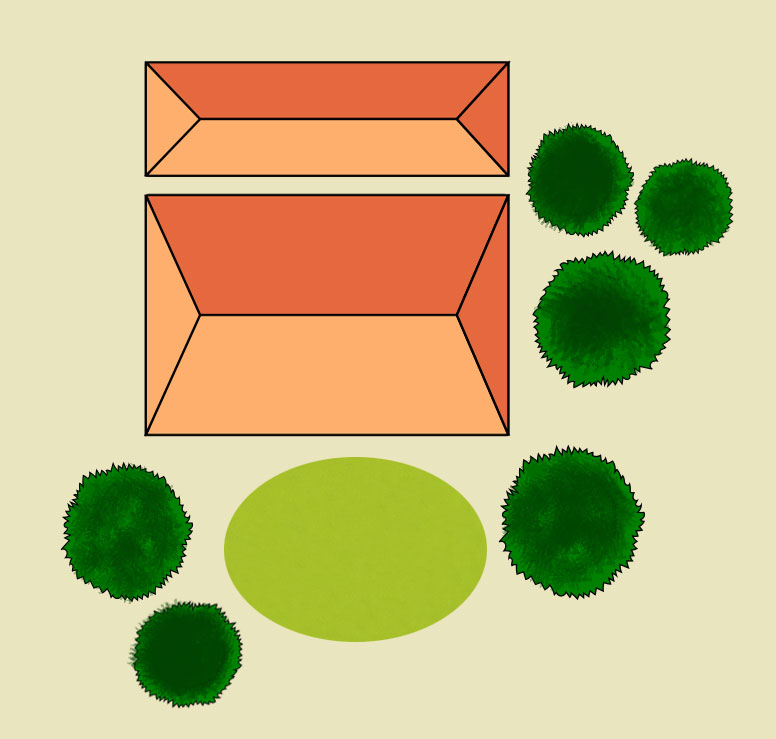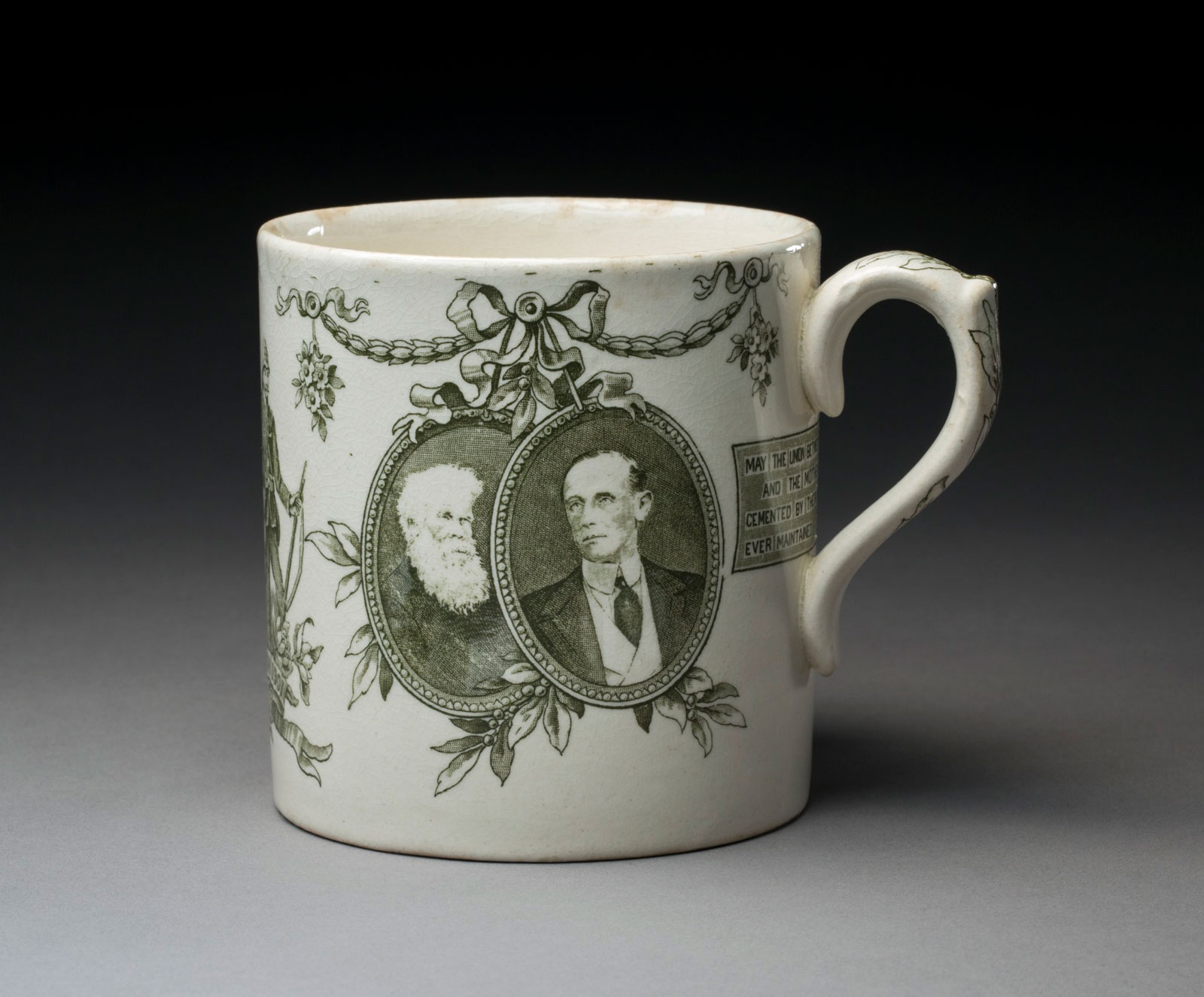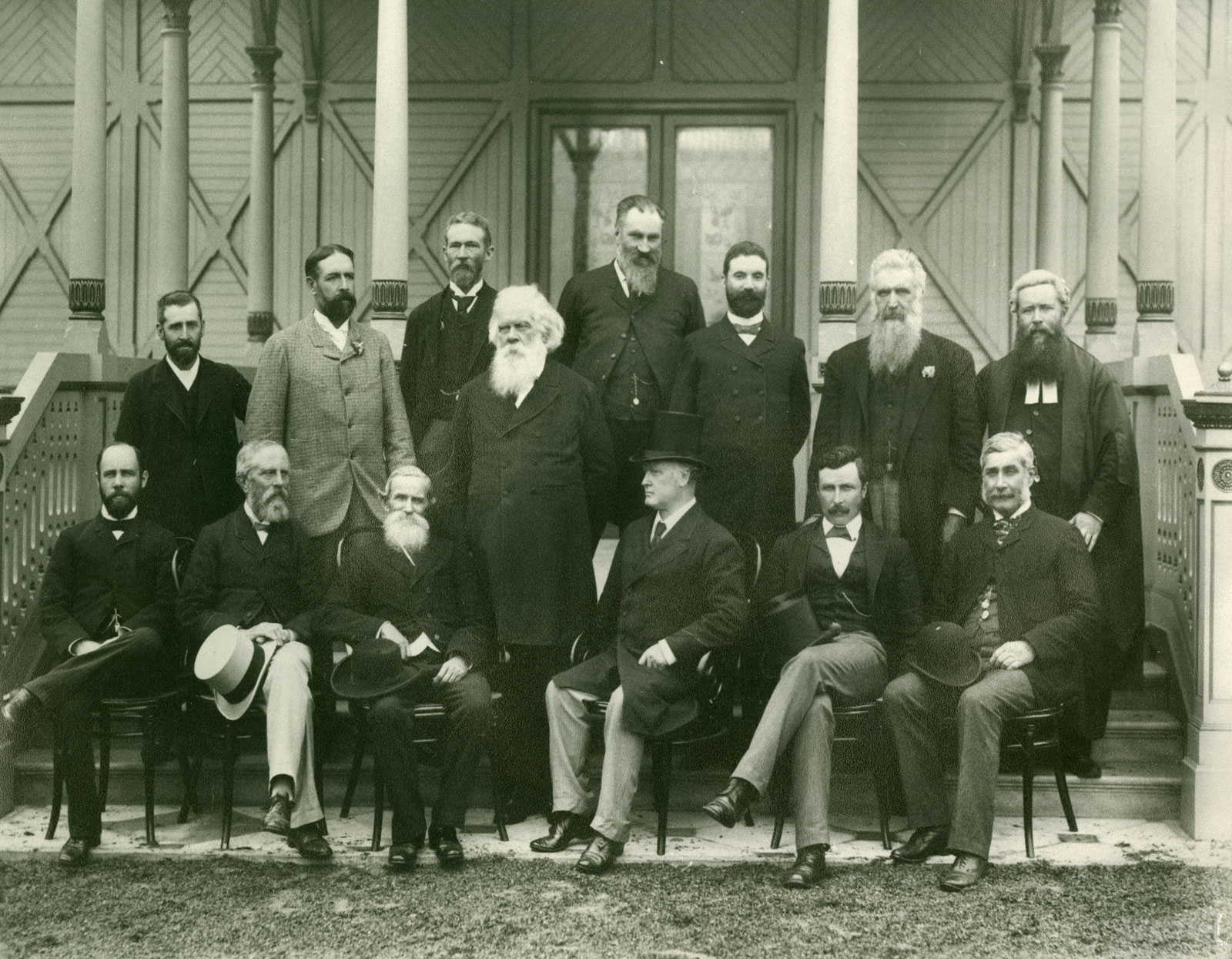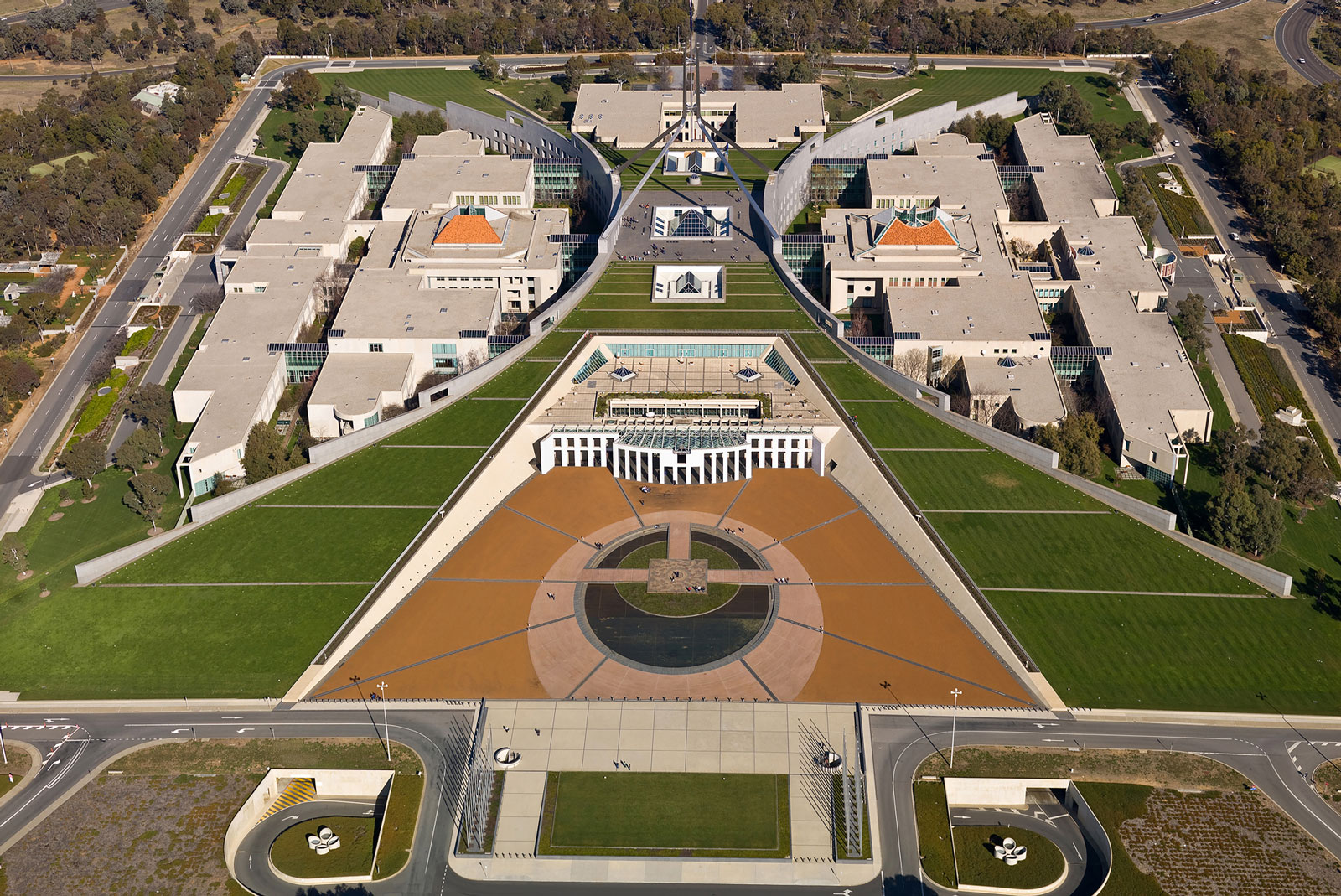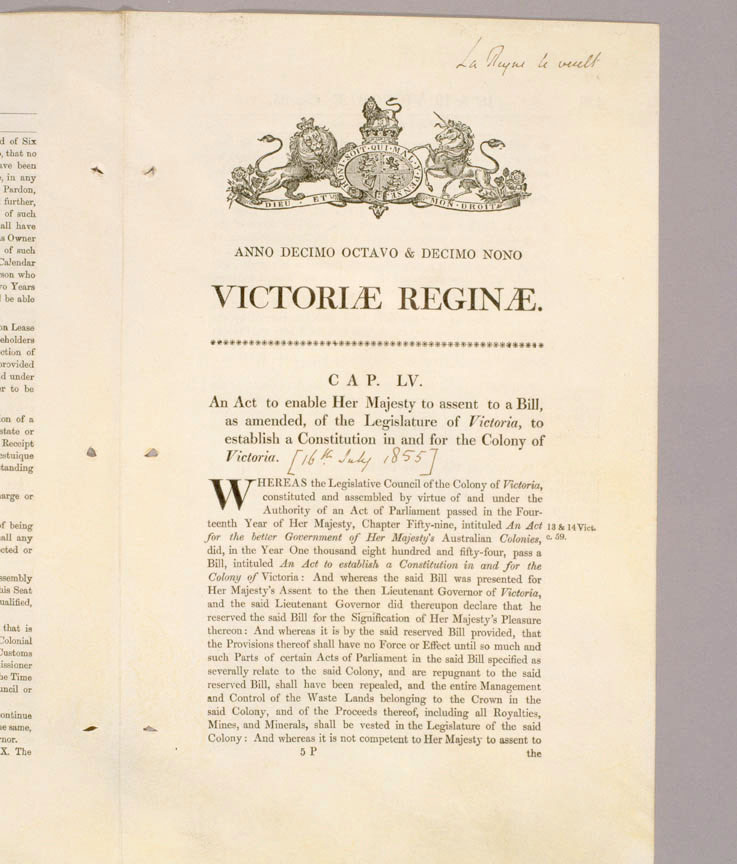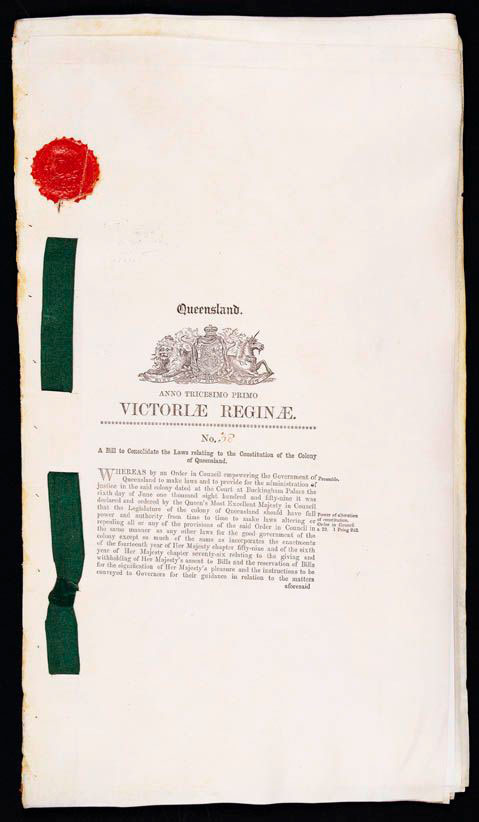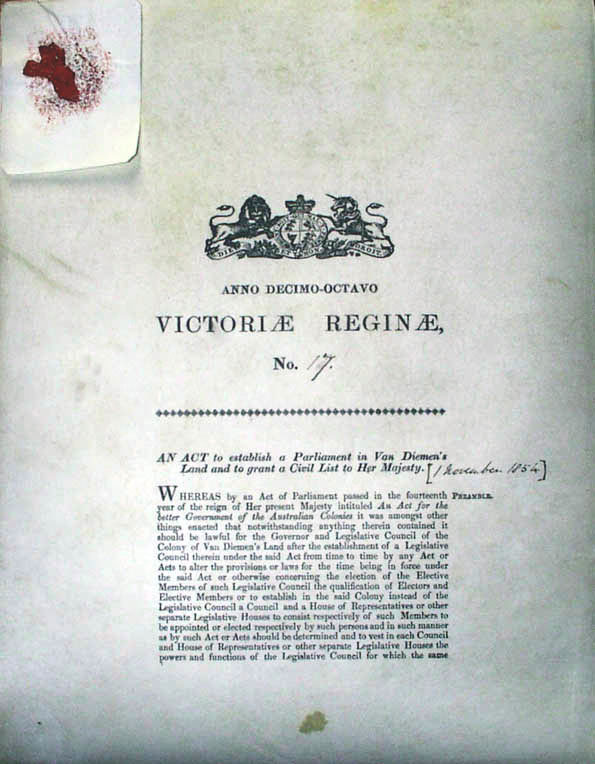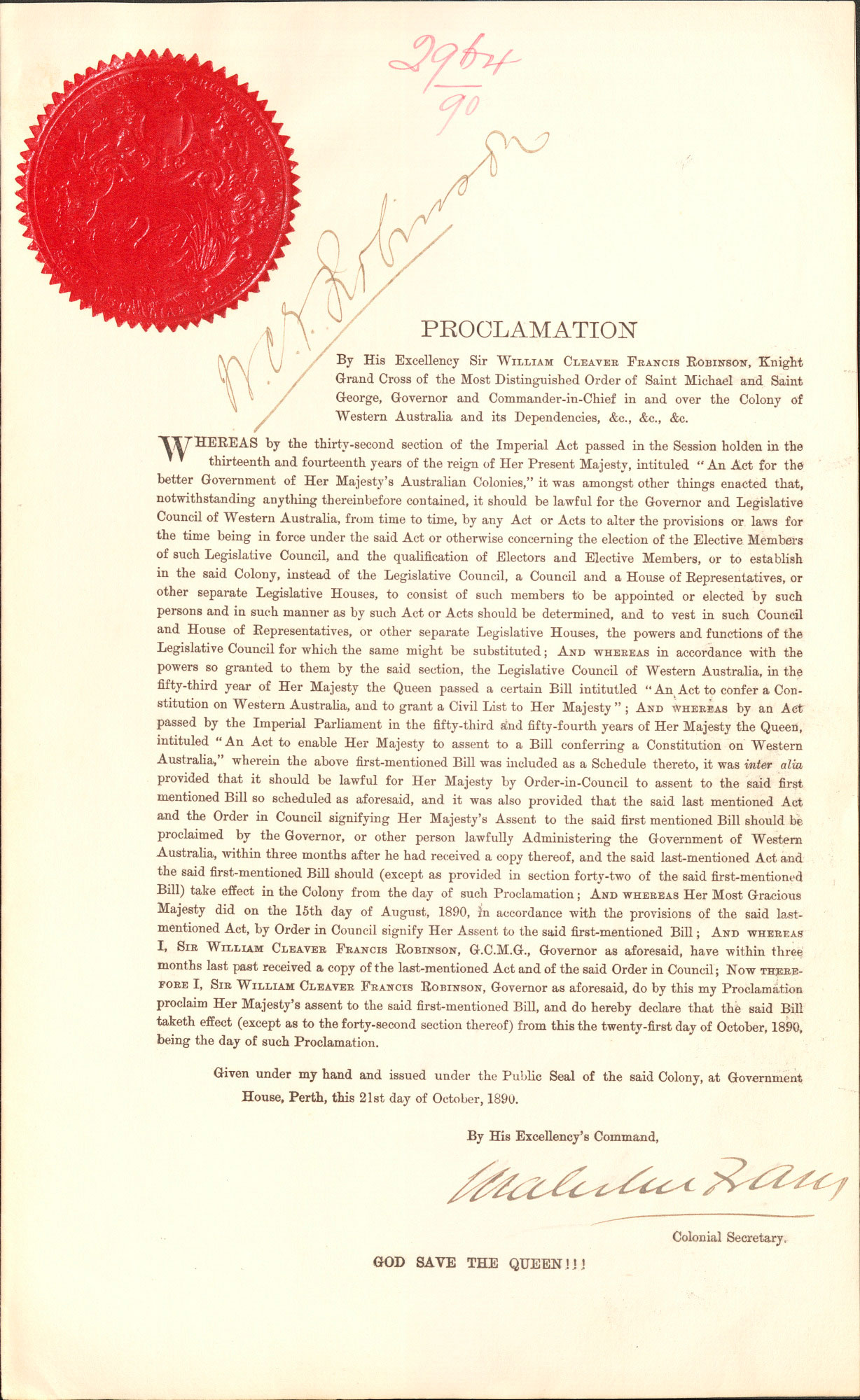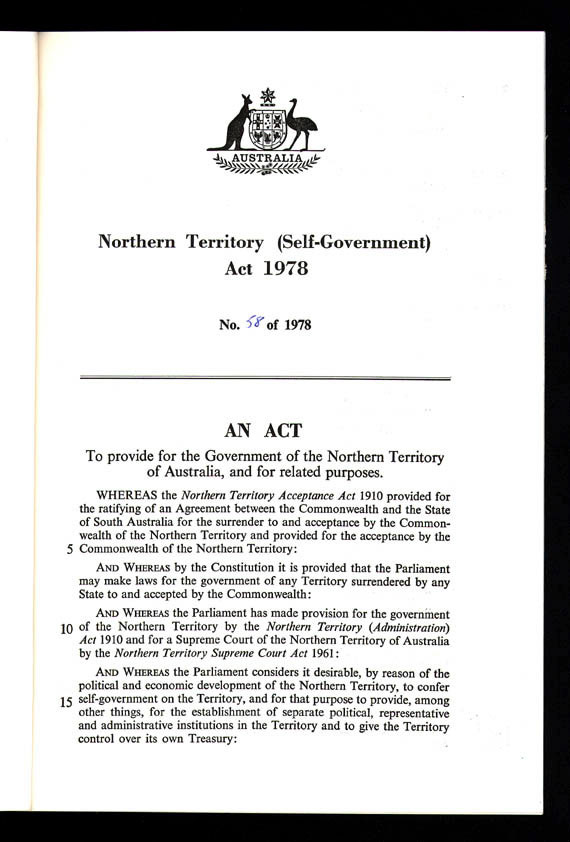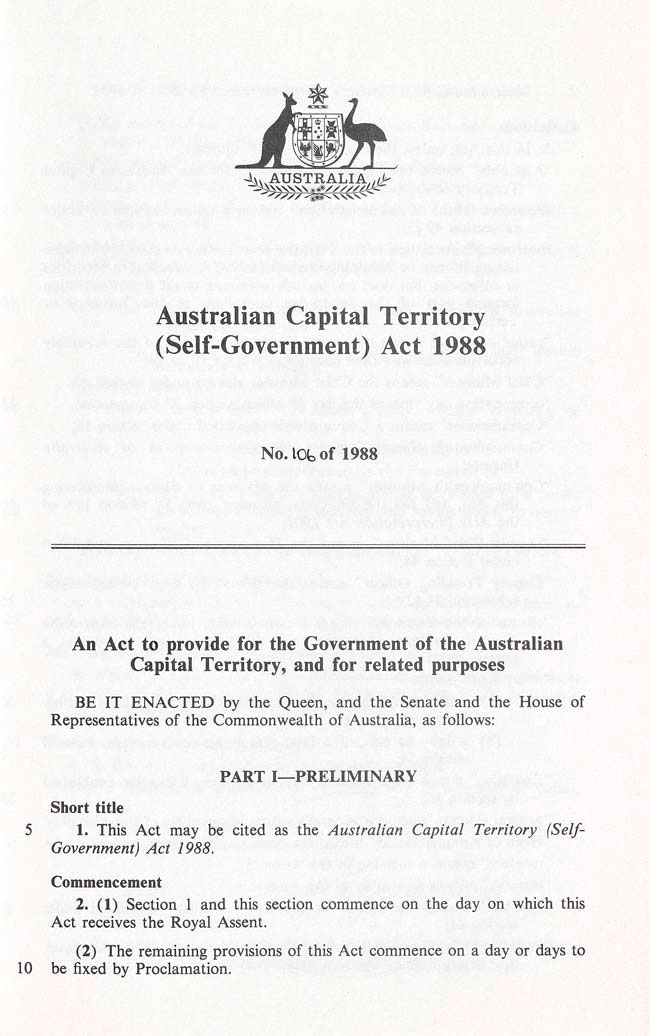Learning module:
Australia since Federation Defining Moments, 1901–present
Investigation 1: Making the nation’s rule book
1.7 Making the rule book — the Constitution
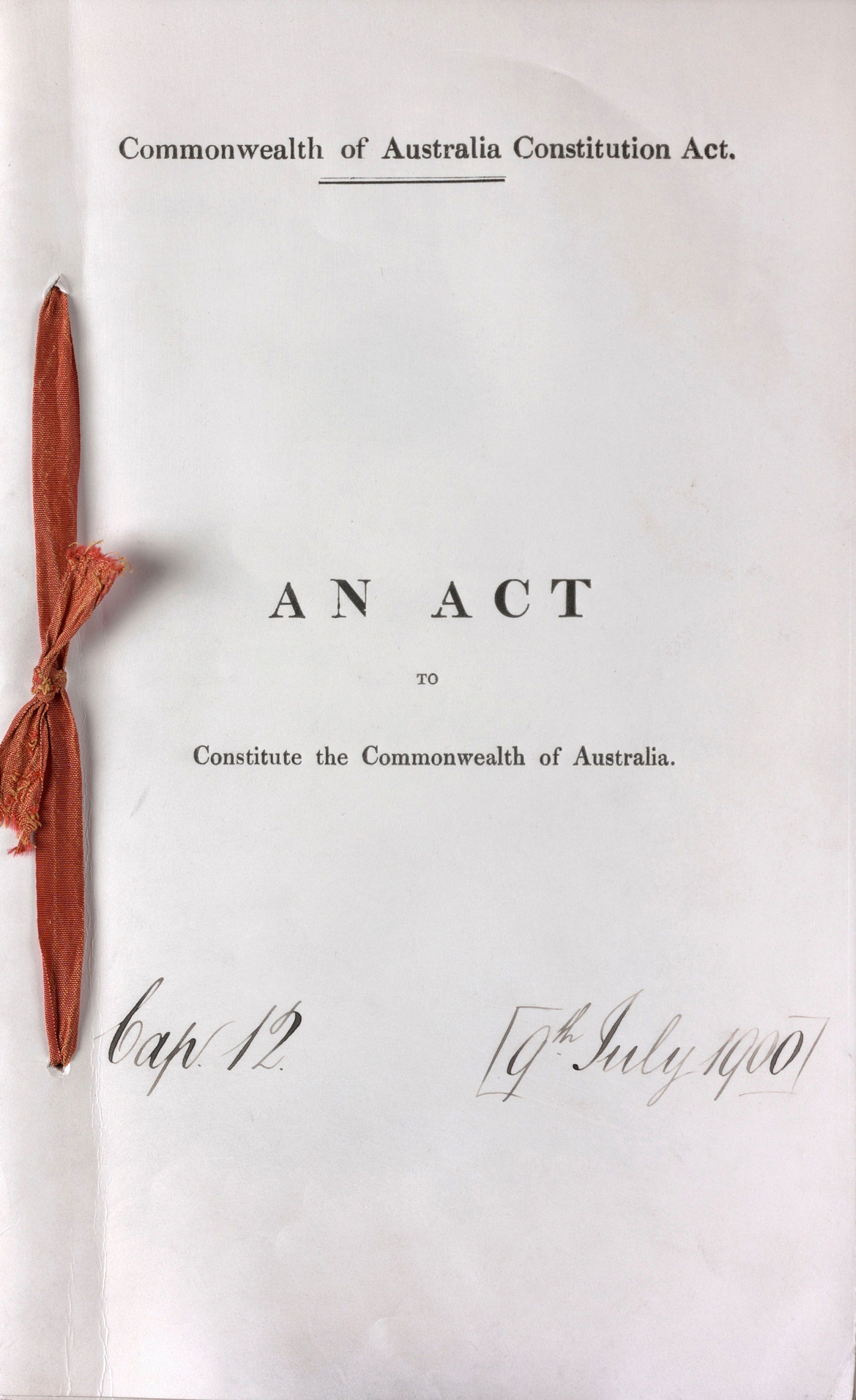
Every state and territory parliament, and the national parliament, has to have a rule book that sets out the areas in which they can make laws. The rule book for each state and territory, and the national parliament, is called a ‘Constitution’. For example if the Constitution or rule book said that a state parliament could not make laws about defence, then if they did make a law about defence, it would not be legally binding.
The six state Constitutions existed in 1900.
Then the Australian Constitution was created in 1901.
The Northern Territory Constitution was created in 1978.
Finally the Australian Capital Territory Constitution was created in 1988.
Before Federation the colonies could make laws about all aspects of life. But some of those areas of power were given to the new national parliament when it was created in 1901.
A main task of the new national Australian Constitution was to list in which areas the new Australian Parliament could make laws, and in which areas the states could make laws.
1. Some areas of lawmaking are listed below. Which areas do you think the states are in charge of, and which areas do you think the Australian Parliament is in charge of? Click the appropriate column.
The Australian Constitution decided which areas of law would be given to the Australian Parliament and which areas would stay with the states. When it was important for a law to apply to all of Australia, the Constitution gave it to the Australian Parliament. But most areas of law making stayed with the states.
Read more about the main areas of national and state lawmaking below. Or skip to the next section
The main areas of national and state lawmaking
The Constitution listed 39 areas where the Australian Parliament would make laws: the main ones were defence, immigration, currency, post and telegraphs, marriage, some pensions, customs and foreign affairs. This could only be changed by the people voting in a referendum.
The states kept the power to make laws in all other areas, including transport, health, education, police, agriculture, water, forests and land. They could also make laws in some of the areas where the Australian Parliament had powers, such as marriage and immigration, but the Australian parliament’s laws had priority.
The Australian Parliament was also able to give money to the states for a specific purpose, and to refuse to give it to a state that didn’t agree to use it for that purpose.
This means that since Federation the Australian Government can tell the states what laws to make in areas such as education and health, even though the Australian Parliament does not have the power to make laws in those areas.
This has meant that the Australian Parliament has become much more important than the state parliaments over time, and much more powerful than the makers of the Constitution in 1901 ever expected.
The makers of Federation also had to decide how the new parliament would work — for example whether there would be one House of Parliament or two, what the Houses would be called, what the rule was if the states and the national parliament tried to make a law about the same thing, and who could be elected to the new parliament.
The creators of the Australian Constitution used the constitutions of other countries to help them. The main ones were the constitutions of Britain (which has never been written down!) and the Constitution of the United States of America (created in 1789).
What did the makers of Federation do?
2. In the quiz below, try to figure out which aspects of the Australian Constitution are based on the British Constitution and which aspects are based on the American Constitution. Use the information below the flags to help you decide then click the box below to see the answer.







